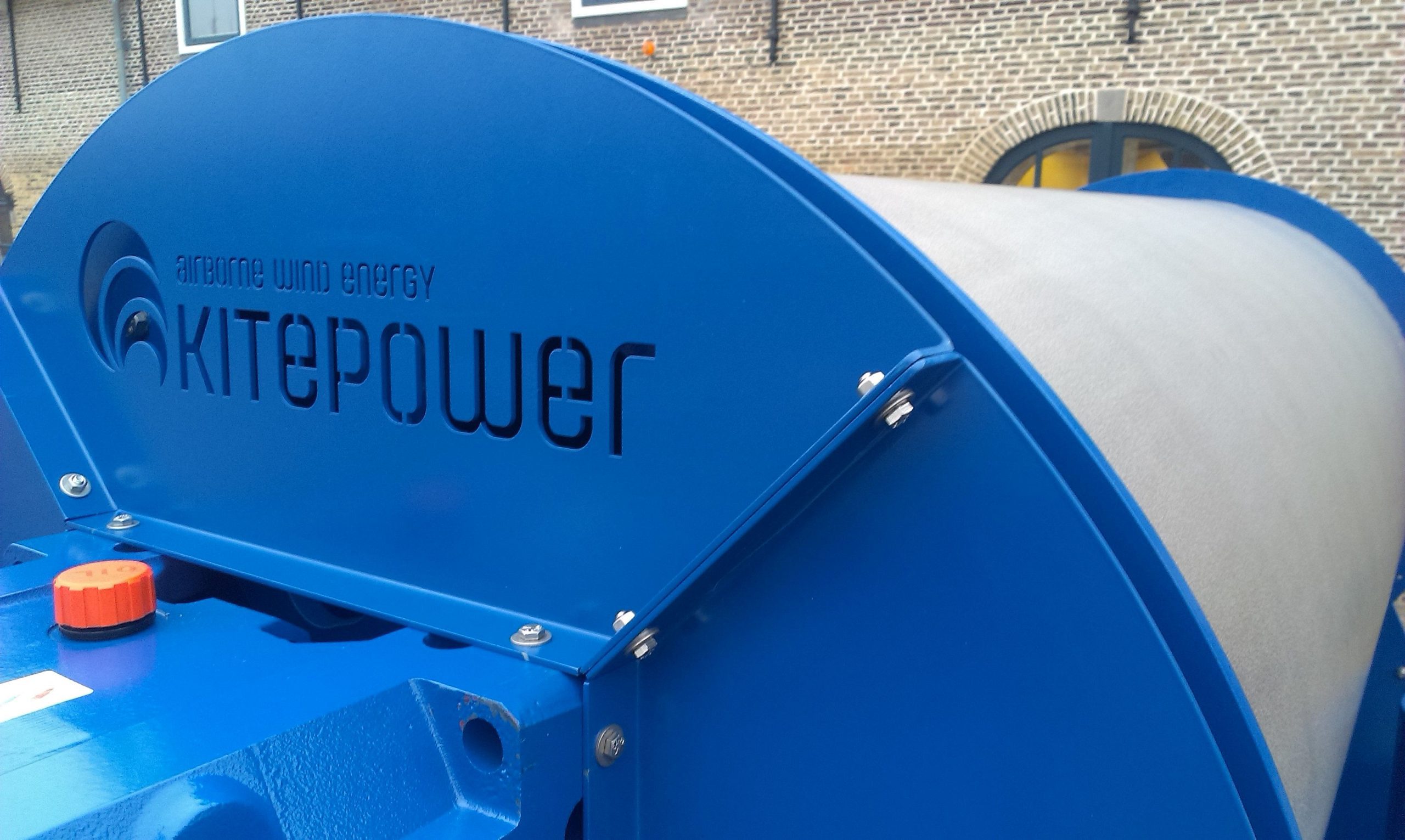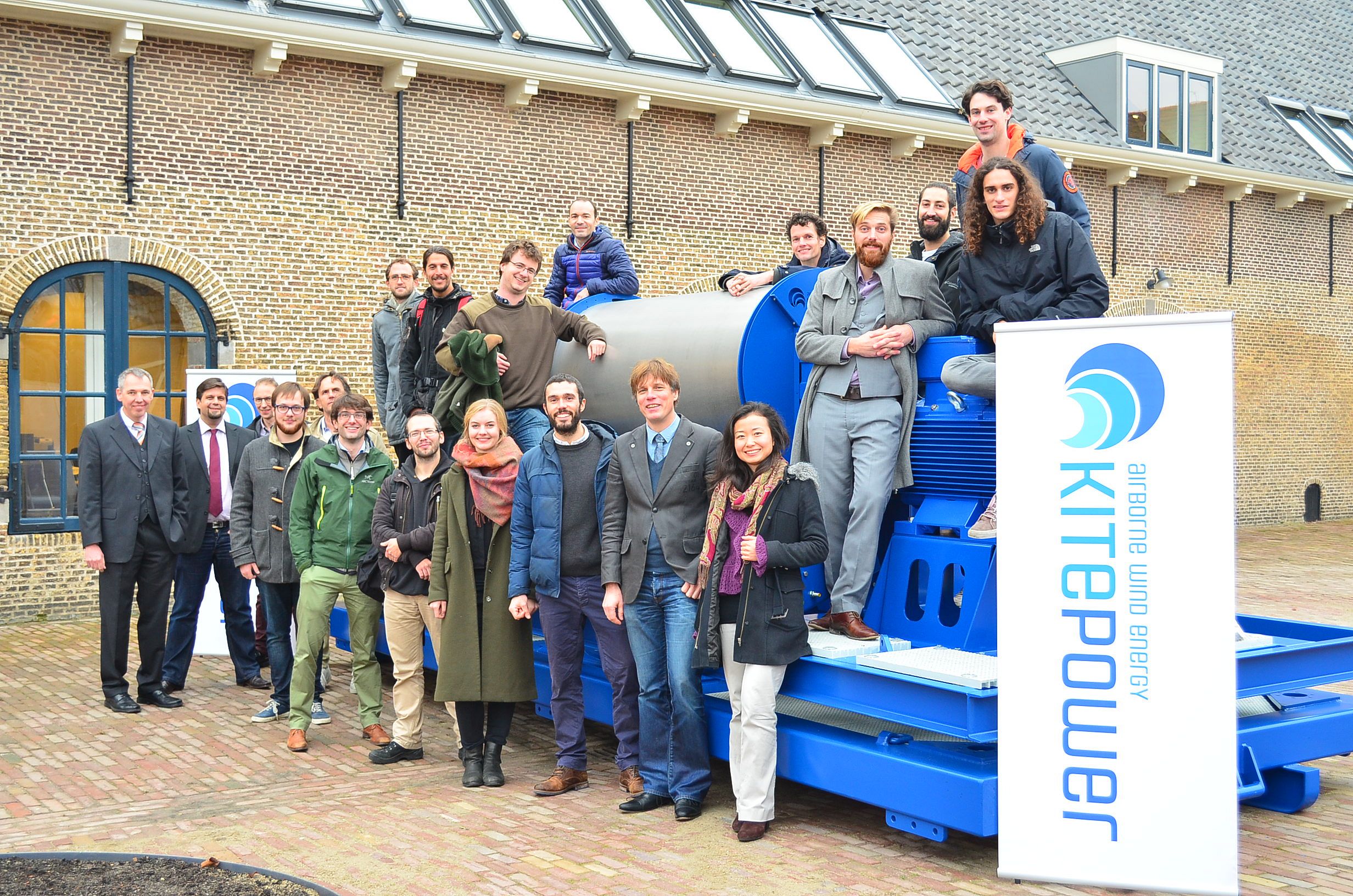Wubbo Ockels patented airborne wind energy almost twenty years ago. The 100 kW generator on display this Friday shows the technology is rapidly scaling up.
The KitePower team with their new generator. (Photos: KitePower)
Dr. Roland Schmehl, associate professor at the Faculty of Aerospace Engineering and head of the KitePower research group, regards 100 kilowatts as a milestone project and a sizeable step up from the 20 kW demonstration in 2012.
After its presentation in Delft, the blue 100 kW generator will be stationed at the former Valkenburg airfield, now dedicated to kite power and drone development. The first tests will deploy a 40 m2 kite which generates 32 kW of power. The next step will be 100 kW of power with a 70 m2 kite.
The way it works is that the system is operated in periodic pumping cycles, alternating between reel-out and reel-in of the tether. During reel-out, the kite flies figure-of-eight manoeuvres at high speed (70 to 90 km/h) and pulls out the line with force (3.1 kN at 7 m/s wind speed), resulting in power production by the drum and the connected generator.
When reaching the maximum height (500 metres at Valkenburg), the system releases the steering lines, thus reducing the kite’s air resistance by 80%. Using the drum/generator module as a winch, the kite is then pulled back to the initial position for the next pumping cycle.
 Ready for shipment (Photo: KitePower)
Ready for shipment (Photo: KitePower)Over the last two years, the KitePower group has received two grants of over three million euros each, for a doctoral training network called Awesco and to build and sell three prototype systems by 2018. The first client is the Dutch Ministry of Defence that contributed 200,000 euros for the first generator.
During the test flights at Valkenburg, PhD students from the KitePower startup company will work on practical problems that may arise, and they will get valuable datasets in return on the flight paths, positions, forces and more.
Projects that Schmehl and his team are preparing for at the moment are the EU 24 hour challenge for airborne wind energy and a contribution to Daan Roosegaarde’s project Icoon Afsluitdijk, details of which cannot be given.
 The company’s pride and joy (Photo: KitePower)
The company’s pride and joy (Photo: KitePower)The technical challenge in the long run is to build an unmanned operation, which will entail autonomous launch and landing when wind conditions change. Most systems use a mast to enable automatic operation.
The researchers have come a long way since TU Professor and former astronaut, Wubbo Ockels, patented his Laddermill in 1998. The promises of the system still stand tall: much less material required in comparison to stationary wind turbines (about 1%) and higher energy potential in the same location because of wind speeds rising with altitude.
- Related: Earlier interview with Roland Schmehl on the Airborne Wind Energy Conference (AWEC) 2015
Do you have a question or comment about this article?
j.w.wassink@tudelft.nl


Comments are closed.